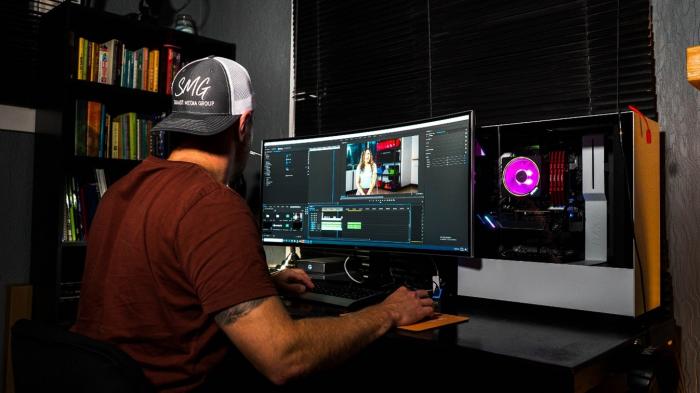How to Use a Video Editor to Create Movies
FTC Statement: Reviewers are frequently provided by the publisher/production company with a copy of the material being reviewed.The opinions published are solely those of the respective reviewers and may not reflect the opinions of CriticalBlast.com or its management.
As an Amazon Associate, we earn from qualifying purchases. (This is a legal requirement, as apparently some sites advertise for Amazon for free. Yes, that's sarcasm.)

(photo credit: Ryan Snaadt)
Modern day life is transversally moved by video, from social media platforms and their “challenges”, to the fact that most of our entertainment comes from movies and series, everything has something to do with audiovisual production. And in such context it´s only natural that more and more people are trying to create their own movies, with their personal style, and without the need to have a mega production from Hollywood behind them, just an idea and a digital camera, or even a good phone.
It was Akira Kurosawa who once said that “all you need to write a script is paper and pencil”, and the meaning of that statement is really deep, since back then a lot of people used to complain to the late and quite astonishing director about the great costs of making a movie. Today those barriers are down and people only need their creativity and a good video editor to create their own movies, but there´s need to be planning as good old Akira used to say, if not, it will be only chaos.
Having an easier time filming and editing doesn´t mean that a movie will be a master piece on its own. As every new film director in this world knows, it´s a matter of having a great idea, planning it and then converting it into pieces of film, which will later conform a movie as a whole. There´s another famous quote about this, said by the also late Andrei Tarkovsky, about cinema being a “mosaic made of time”, where a movie is just a recollection of small scenes, perfectly put together to create something beautiful.
But of course as every artists, everybody must undergo a lot of “ugly mosaics” until creating something that will look like those old European churches´ windows. Eventually with time, a good script and some tips about filming, a mediocre movie will be underway. After that, reviewing what could have been better and correcting the mistakes in the creation, the next final product will be improving, and after enough filming and writing, you will produce a good movie that might worth a lot.
What makes a movie good?
Checking some examples in recent history, like the Oscar winning “Parasites”, there´s a shift from explosions, great productions and lots of expending to something more intellectual, where the mind is driven to exercise and find new, enriching things amongst the way. Longer scenes, with more than 2-3 seconds to “save time”, there´s no need to over rush it, just give the correct amount of time that scene needs.
If the actor or actress is finding his way in a scene, and they are giving you a great performance, then give them more time to exploit it. Create a longer and better scene out of it, the audience will surely appreciate it since now a days, there aren´t many great performances on screen and everything is rushed, like when that “accelerated” friend tries to tell a story, you might not understand what´s going on and might miss a lot of details on the way.
Another great example of this is Netflix´s rebirth of a great classic, the movie “All Quiet on the Western Front”, an antiwar thesis based on the novel by Erich Maria Remarque. The film takes its time to describe situations, allows the audience to get on the “skin” of the protagonist and lets the correct amount of time to “feel” what is going on. It´s an often rare but interesting quality that makes a film that could pass for another war movie, into what might be soon a good classic.
How to use a video editor to create movies?
The “timeline” concept is one of the greatest ideas in new movies history, the fact that most of video editors are using this format makes it even easier to put a movie together using the different segments of film. They also allow the possibility to add sound effects, music, and of course video effects, like text in different formats, plaques and even visual effects like adding fire to a house and creating the illusion of it burning, or even add lightning to a fake raining segment.
The possibilities are almost endless with this kind of software, since you can also export the film in different presets, ideal for publishing it in the most famous platforms these days, like YouTube, TikTok or even Instagram. But also being able to publish the film in more professional formats for wide screens, even converting it for television audiences. It also allows to create videos specifically for mobile devices, adjusting the frame rate and proportion to make it even more engaging for those watching it in such tech.
For many experts in the subject, the usage of these video editors will open a new era in the film industry, giving a lot of “underdogs” the possibility to show their work and maybe make it to the great leagues. Since this kind of projects, like those made out of effort and hard work, usually end up having a level of detail that the new executives of chains like Netflix like to see in their acquired new talents.


